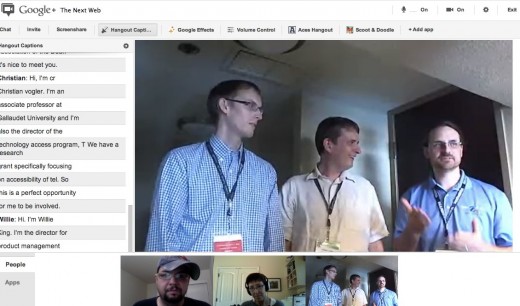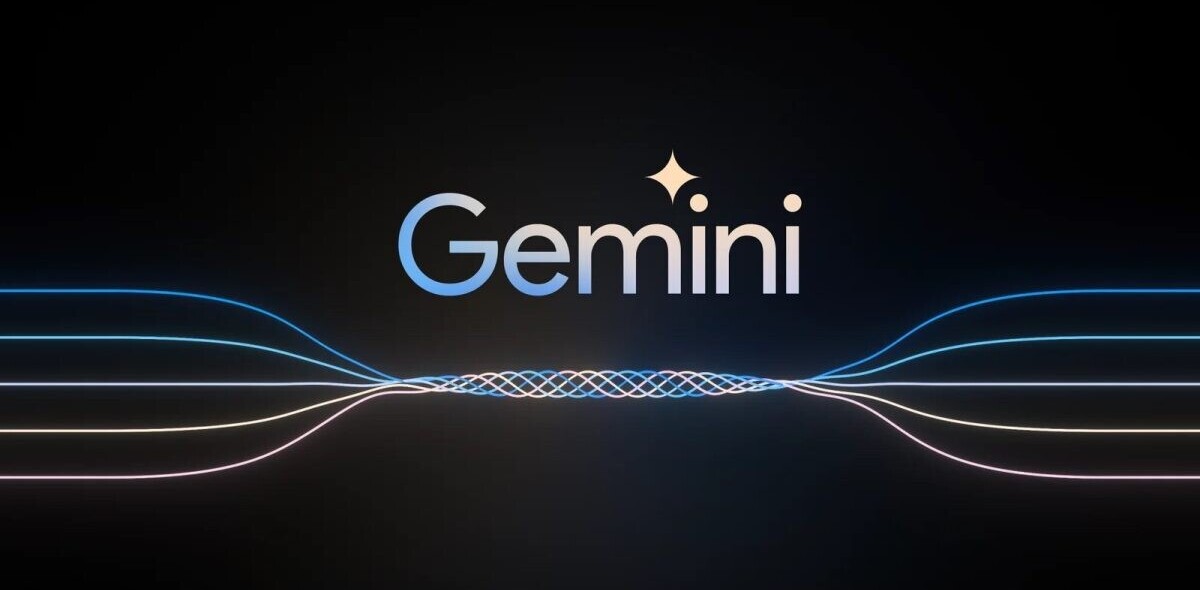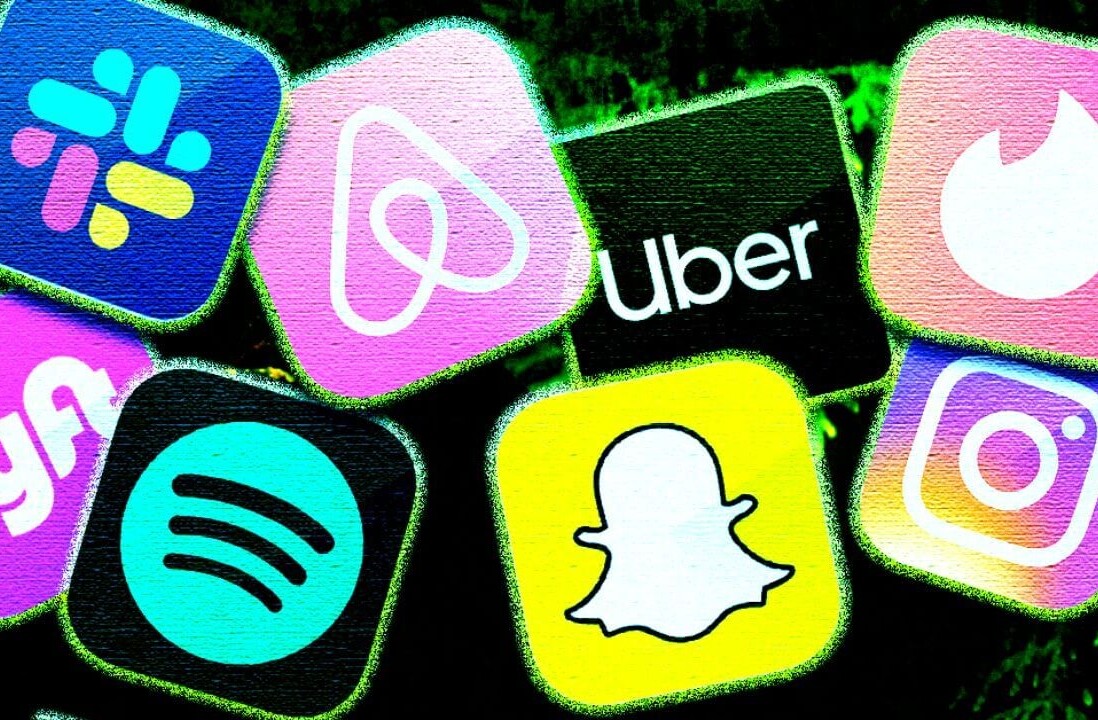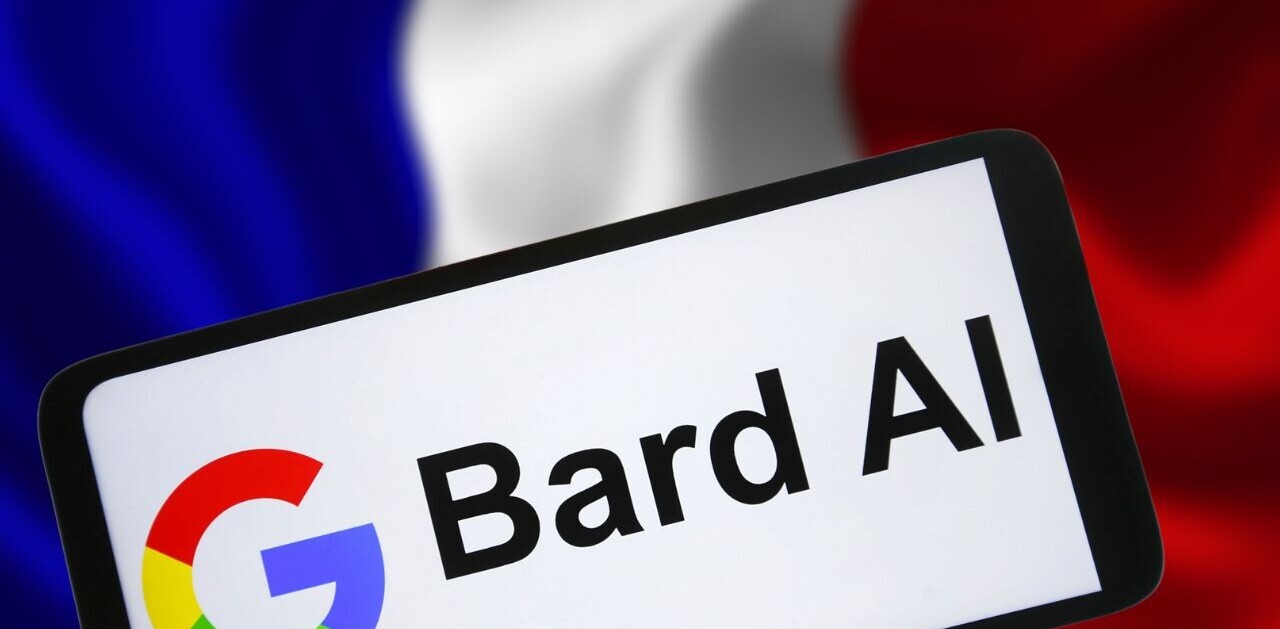
Last week, I had the great honor to speak with three very awesome people in a Google+ Hangout: Christian Vogler, director of the Technology Access Program at Gallaudet, Andrew Phillips, policy counsel at the NAD and Willie King, the director of product management at ZVRS.
These three folks have one thing in common – they are deaf.
I can’t understand sign language, and I speak way too fast for anyone to be able to read my lips. How did it go without a hitch? Thanks to a Google+ Hangout app announced by the Google Accessibility team last week, a sign language expert and a fantastic CART transcriptionist, Laura Brewer. All in real-time, all virtually.

Without this technology, I would have never gotten to talk to Christian, Andrew and Willie. During our conversation, the three shed some light on why Hangout Captions is such a powerful thing. The entire time all I could think to myself was “I can’t imagine how frustrating it would be to try and communicate without technology.” Mind you, I didn’t feel “sorry” for them for being hearing impaired, I felt sorry for myself for not being able to communicate properly via other means.
That’s right, I was the minority. The experience has changed the way that I will view communication forever.
The app that you see above allowed me to speak freely, while Laura typed my words in at an astonishing 200 words per minute. She wasn’t in the room with me, or the other gents. She was piped in via the Google+ Hangout and it was awesome. Everything she typed showed up on the left-hand side of the screen, allowing everyone to see what I was saying. An interpretor spoke out loud so that I could hear what they had to say.
Christian Vogler told me right away that “for deaf and hard of hearing people, video conferences are a nightmare.” Vogler went on to tell me that usually, he has to call in via an audio bridge, because video services don’t support technology like this. The transcriptionist would get on the call with him, and they’d do the listening for him, taking the power of communication out of his hands completely.
As we talked more, I quickly understood how important this could be for students, businesses, churches and just about any situation where you need to make sure that everyone can understand what’s going on. By having the transcriptions, you can even go over the conversation later, which is an awesome education tool.
When reading a conversation that is happening over a phone, Andrew Phillips told me that “Context is a big problem. You can’t see the body language and expressions, and lip reading is impossible.”
All three of the guys that I spoke to were very happy that Google and the Google API team made Hangouts available for this type of transformative communication, and I think that Willie King summed it up the best by saying:
A lot of people benefit from accessibility, not just just deaf and hard of hearing.
I know I certainly benefitted from it, more than anyone else in the Hangout perhaps.
Get the TNW newsletter
Get the most important tech news in your inbox each week.





